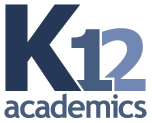- Education Topics
- Achievement Gap
- Alternative Education
- American Education Awards
- Assessment & Evaluation
- Education during COVID-19
- Education Economics
- Education Environment
- Education in the United States during COVID-19
- Education Issues
- Education Policy
- Education Psychology
- Education Scandals and Controversies
- Education Reform
- Education Theory
- Education Worldwide
- Educational Leadership
- Educational Philosophy
- Educational Research
- Educational Technology
- Federal Education Legislation
- Higher Education Worldwide
- Homeless Education
- Homeschooling in the United States
- Migrant Education
- Neglected/Deliquent Students
- Pedagogy
- Sociology of Education
- Special Needs
- National Directories
- After School Programs
- Alternative Schools
- The Arts
- At-Risk Students
- Camps
- Camp Services
- Colleges & Universities
- Counties
- Driving Schools
- Educational Businesses
- Financial Aid
- Higher Education
- International Programs
- Jewish Community Centers
- K-12 Schools
- Language Studies
- Libraries
- Organizations
- Preschools
- Professional Development
- Prom Services
- School Assemblies
- School Districts
- School Field Trips
- School Health
- School Supplies
- School Travel
- School Vendors
- Schools Worldwide
- Special Education
- Special Needs
- Study Abroad
- Teaching Abroad
- Volunteer Programs
- Youth Sports
- For Schools
- Academic Standards
- Assembly Programs
- Blue Ribbon Schools Program
- Educational Accreditation
- Educational Television Channels
- Education in the United States
- History of Education in the United States
- Reading Education in the U.S.
- School Grades
- School Meal Programs
- School Types
- School Uniforms
- Special Education in the United States
- Systems of Formal Education
- U.S. Education Legislation
- For Teachers
- Academic Dishonesty
- Childcare State Licensing Requirements
- Classroom Management
- Education Subjects
- Educational Practices
- Interdisciplinary Teaching
- Job and Interview Tips
- Lesson Plans | Grades
- Professional Development
- State Curriculum Standards
- Substitute Teaching
- Teacher Salary
- Teacher Training Programs
- Teaching Methods
- Training and Certification
- For Students
- Academic Competitions
- Admissions Testing
- At-Risk Students
- Career Planning
- College Admissions
- Drivers License
- Educational Programs
- Educational Television
- High School Dropouts
- Higher Education
- School Health
- Senior Proms
- Sex Education
- Standardized Testing
- Student Financial Aid
- Student Television Stations
- Summer Learning Loss
Home | National Directories | Bilingual Immersion Programs | Field Elementary Dual Immersion School |
Field Elementary Dual Immersion School

Basic Information
Address: 4375 Bannock Avenue
San Diego, CA. 92117
Phone Number: (858) 800-5900
District: San Diego Unified School District
Fax Number: (858) 800-5949
Director: Amy Griffiths
Additional Information
Partner(non-english) Language used in Program: Spanish
First year of Program Implementation at Site: 20013
School Type: Public School
School Size: 275
Teacher/Student Ratio: 24:1
Grade Level(s): Pre-K
Number of Classes: 3
Two-way Recruitment Procedures: Advertising, school tours, community outreach, preschool articulation nights
Criteria for Selection:
Neighborhood boundaries, CHOICE application process,
Available Program Materials: Brochures, fliers, pencils, bilingual books
% of Native English Speaking Students: 30.3
% of students in program who are native speakers of the partner language: 33.3
% of students in program who are native bilinguals: 33.3
% of third language speakers: 3
Additional languages spoken: Japanese, portuguese, vietnamese,
% of Students qualifying for Free/Reduced Lunch: 100
Separation of Languages for Instruction: 90% Target Language Spanish; 10% English Instruction
% of School day Students from the two language groups is integrated: 100
Secondary Programs: Currently developing pathways for secondary dual immersion instruction to continue
Language Used for Emergent Literacy Instruction: Spanish
% of Classroom Teacher proficient in both languages: 100
Additional Program Staff: Library assistant, Volunteers,
% of Additional Program staff proficient in both languages: 50%
Program Evaluated on Regular basis?: Yes
Evaluator Contact: Veronika Lopez-Mendez, Program Manager
Office of Language Acquisition
Computer Capabilities: All classrooms are equipped with i21 technologies to prepare students for 21st century learning. Every classroom has a interactive promethean board, laptop, surround system with microphones, and tablets/netbooks for every child.
School Holidays: Follows district traditional school year calendar
Mission Statement:
Our mission is to provide strong basic skill instruction, critical thinking development, leadership opportunities, and successful integration experiences in an environment that nurtures a lifelong love of learning.
Belief Statements:
Each child will have the opportunity to develop emotionally, physically, socially, and academically.
We believe and are committed to the concepts that:
-
All children can learn.
-
Education is a continual process.
-
Cooperation and communication are necessary for learning.





